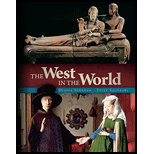
Foundations of Materials Science and Engineering
6th Edition
ISBN: 9781259696558
Author: SMITH
Publisher: MCG
expand_more
expand_more
format_list_bulleted
Question
Chapter 14.12, Problem 20KCP
To determine
The reason for increasing of the electrical conductivity of intrinsic silicon and germanium with increasing temperature.
Expert Solution & Answer
Want to see the full answer?
Check out a sample textbook solution
Students have asked these similar questions
FEA
FEA
FEA
Chapter 14 Solutions
Foundations of Materials Science and Engineering
Ch. 14.12 - Describe the classic model for electrical...Ch. 14.12 - Prob. 2KCPCh. 14.12 - Prob. 3KCPCh. 14.12 - Prob. 4KCPCh. 14.12 - Prob. 5KCPCh. 14.12 - Define the following quantities pertaining to the...Ch. 14.12 - Prob. 7KCPCh. 14.12 - What structural defects contribute to the residual...Ch. 14.12 - Prob. 9KCPCh. 14.12 - Prob. 10KCP
Ch. 14.12 - Prob. 11KCPCh. 14.12 - Prob. 12KCPCh. 14.12 - Prob. 13KCPCh. 14.12 - Prob. 14KCPCh. 14.12 - Prob. 15KCPCh. 14.12 - Prob. 16KCPCh. 14.12 - Prob. 17KCPCh. 14.12 - Prob. 18KCPCh. 14.12 - Prob. 19KCPCh. 14.12 - Prob. 20KCPCh. 14.12 - Prob. 21KCPCh. 14.12 - Prob. 22KCPCh. 14.12 - Prob. 23KCPCh. 14.12 - Prob. 24KCPCh. 14.12 - Prob. 25KCPCh. 14.12 - Prob. 26KCPCh. 14.12 - Prob. 27KCPCh. 14.12 - Describe the movement of the majority and minority...Ch. 14.12 - Prob. 29KCPCh. 14.12 - Prob. 30KCPCh. 14.12 - What is a zener diode? How does this device...Ch. 14.12 - Prob. 32KCPCh. 14.12 - Prob. 33KCPCh. 14.12 - Prob. 34KCPCh. 14.12 - Prob. 35KCPCh. 14.12 - Describe how the planar bipolar transistor can...Ch. 14.12 - Prob. 37KCPCh. 14.12 - Prob. 38KCPCh. 14.12 - Prob. 39KCPCh. 14.12 - Prob. 40KCPCh. 14.12 - Prob. 41KCPCh. 14.12 - Prob. 42KCPCh. 14.12 - Prob. 43KCPCh. 14.12 - Prob. 44KCPCh. 14.12 - Prob. 45KCPCh. 14.12 - Prob. 46KCPCh. 14.12 - Prob. 47KCPCh. 14.12 - Prob. 48KCPCh. 14.12 - Prob. 49KCPCh. 14.12 - Prob. 50KCPCh. 14.12 - Prob. 51KCPCh. 14.12 - Prob. 52KCPCh. 14.12 - Prob. 53KCPCh. 14.12 - What are ferroelectric domains? How can they be...Ch. 14.12 - Prob. 55KCPCh. 14.12 - Prob. 56KCPCh. 14.12 - What are the PZT piezoelectric materials? In what...Ch. 14.12 - Prob. 58AAPCh. 14.12 - Prob. 59AAPCh. 14.12 - Prob. 60AAPCh. 14.12 - Prob. 61AAPCh. 14.12 - Prob. 62AAPCh. 14.12 - Prob. 63AAPCh. 14.12 - Prob. 64AAPCh. 14.12 - Prob. 65AAPCh. 14.12 - Prob. 66AAPCh. 14.12 - Prob. 67AAPCh. 14.12 - Prob. 68AAPCh. 14.12 - Prob. 69AAPCh. 14.12 - Prob. 70AAPCh. 14.12 - Phosphorus is added to make an n-type silicon...Ch. 14.12 - Prob. 72AAPCh. 14.12 - A silicon wafer is doped with 2.50 1016 boron...Ch. 14.12 - A silicon wafer is doped with 2.50 1015...Ch. 14.12 - Prob. 75AAPCh. 14.12 - Prob. 76AAPCh. 14.12 - Prob. 77AAPCh. 14.12 - What fabrication techniques are used to encourage...Ch. 14.12 - Prob. 79AAPCh. 14.12 - Prob. 80AAPCh. 14.12 - Calculate the intrinsic electrical conductivity of...Ch. 14.12 - Prob. 82AAPCh. 14.12 - Prob. 83AAPCh. 14.12 - Prob. 85AAPCh. 14.12 - Prob. 86AAPCh. 14.12 - Prob. 87AAPCh. 14.12 - Prob. 88AAPCh. 14.12 - Prob. 89AAPCh. 14.12 - Prob. 90AAPCh. 14.12 - Prob. 91AAPCh. 14.12 - Prob. 92SEPCh. 14.12 - Prob. 93SEPCh. 14.12 - Design a p-type semiconductor based on Si that...Ch. 14.12 - Prob. 95SEPCh. 14.12 - Prob. 96SEPCh. 14.12 - Prob. 97SEPCh. 14.12 - Prob. 98SEPCh. 14.12 - Prob. 99SEPCh. 14.12 - Prob. 100SEP
Knowledge Booster
Learn more about
Need a deep-dive on the concept behind this application? Look no further. Learn more about this topic, mechanical-engineering and related others by exploring similar questions and additional content below.Similar questions
- True and False Indicate if each statement is true or false. T/F 1. Rule #1 protects the function of assembly. T/F 2. One of the fundamental dimensioning rules requires all dimensions apply in the free-state condition for rigid parts. T/F 3. The fundamental dimensioning rules that apply on a drawing must be listed in the general notes. T/F 4. Where Rule #1 applies to a drawing, it limits the form of every feature of size on the drawing. T/F 5. Rule #1 limits the variation between features of size on a part. T/F 6. The designer must specify on the drawing which features of size use Rule #1. T/F T/F T/F 7. Rule #1 applies to nonrigid parts (in the unrestrained state). 8. A GO gage is a fixed-limit gage. 9. Rule #1 requires that the form of an individual regular feature of size is controlled by its limits of sizearrow_forwardFEAarrow_forwardFEAarrow_forward
- FEAarrow_forwardنصاف Sheet Asteel bar of rectangular cross section with dimension Shown in fig. below. This bar is as Connected toawell. Using welded Join a long the sides als only find the weld size (h). Where: Tall = 35 MN/M² F=213.30 answer/h= 4.04 ☐ Yomm Soomm 100mmarrow_forwardPlease also draw the FBDsarrow_forward
- Design Description: Fresh water tank, immersed in an oil tank.a) Water tank:a. Shape: Cylindricalb. Radius: 1 meterc. Height: 3 metersd. Bottom airlock: 0.2m x 0.2m. b) Oil tank:a. Shape: cylindricalb. Radius: 4 metersc. Oil density: 850 kg/m³ Determine:a) The pressure experienced by an airlock at the bottom of the tank with water.b) The force and direction necessary to open the lock, suppose the lock weighs 20 Newtons, suppose the lock opens outwards. The image is for illustrative purposes, the immersed cylinder does not reach the bottomarrow_forwardNeed help!arrow_forwardneed help understanding?arrow_forward
arrow_back_ios
SEE MORE QUESTIONS
arrow_forward_ios
Recommended textbooks for you
 Understanding Motor ControlsMechanical EngineeringISBN:9781337798686Author:Stephen L. HermanPublisher:Delmar Cengage Learning
Understanding Motor ControlsMechanical EngineeringISBN:9781337798686Author:Stephen L. HermanPublisher:Delmar Cengage Learning Automotive Technology: A Systems Approach (MindTa...Mechanical EngineeringISBN:9781133612315Author:Jack Erjavec, Rob ThompsonPublisher:Cengage Learning
Automotive Technology: A Systems Approach (MindTa...Mechanical EngineeringISBN:9781133612315Author:Jack Erjavec, Rob ThompsonPublisher:Cengage Learning

Understanding Motor Controls
Mechanical Engineering
ISBN:9781337798686
Author:Stephen L. Herman
Publisher:Delmar Cengage Learning

Automotive Technology: A Systems Approach (MindTa...
Mechanical Engineering
ISBN:9781133612315
Author:Jack Erjavec, Rob Thompson
Publisher:Cengage Learning
Microelectronics Fabrication Center; Author: AnritsuCompany;https://www.youtube.com/watch?v=oDC6WWj3gmk;License: Standard Youtube License